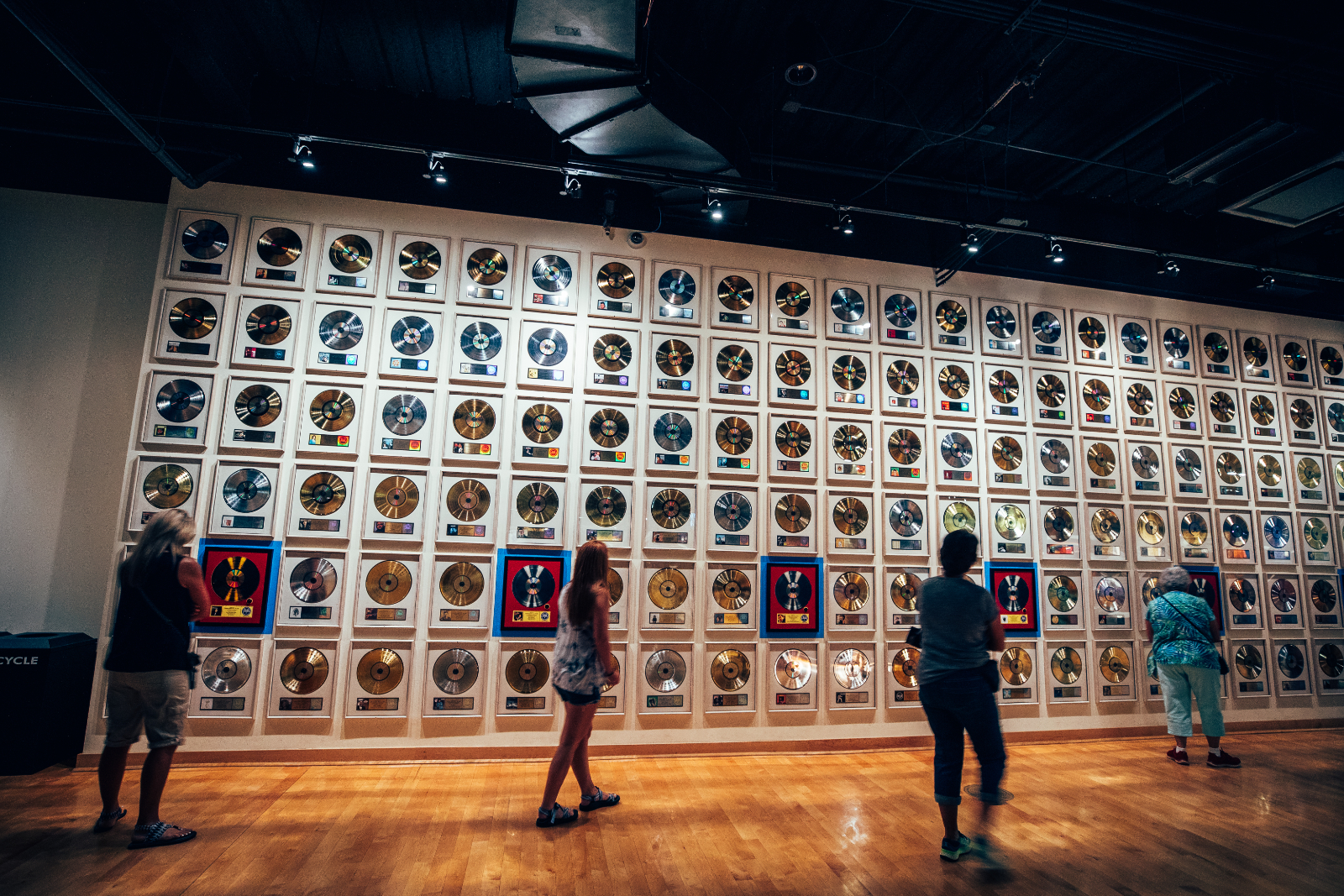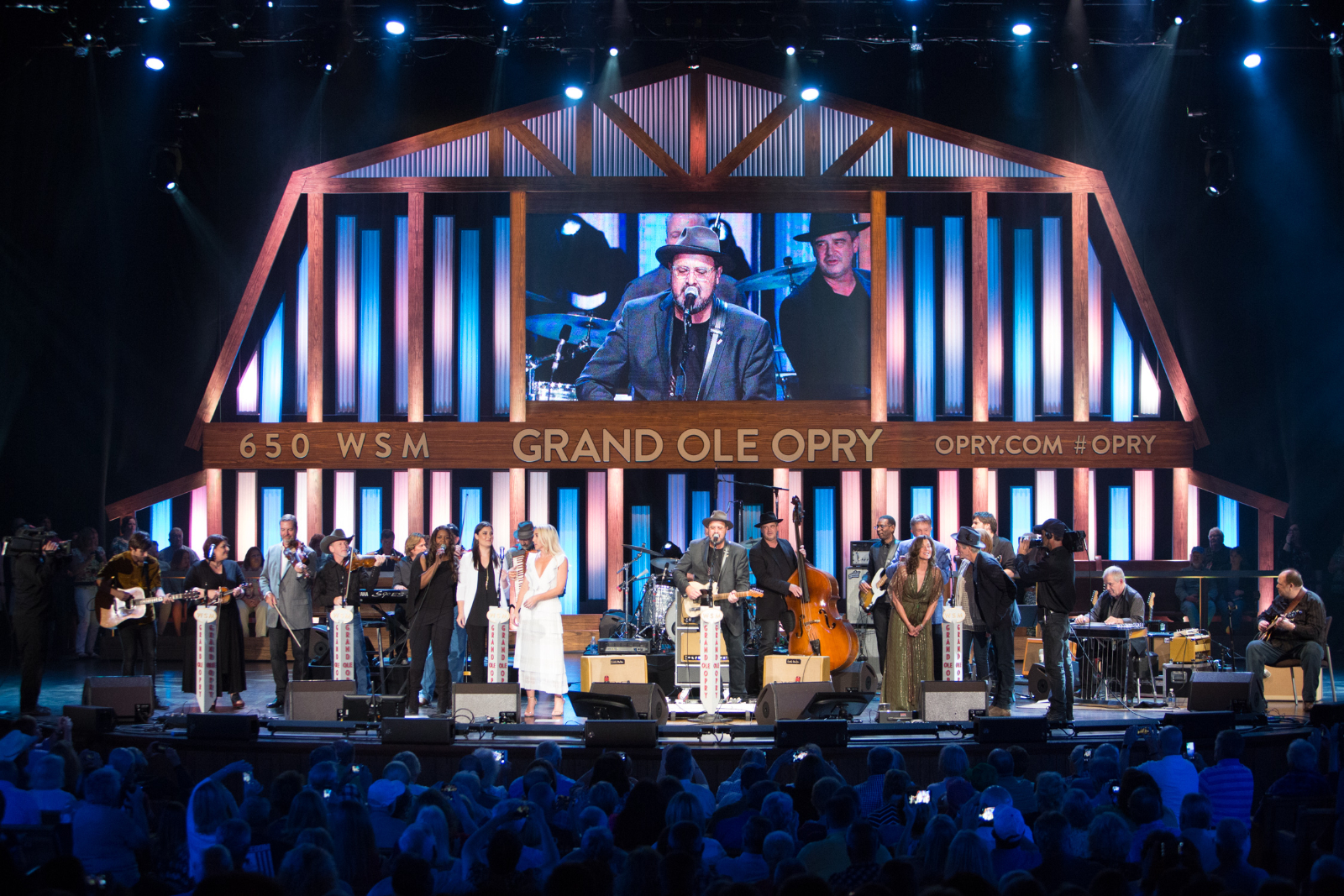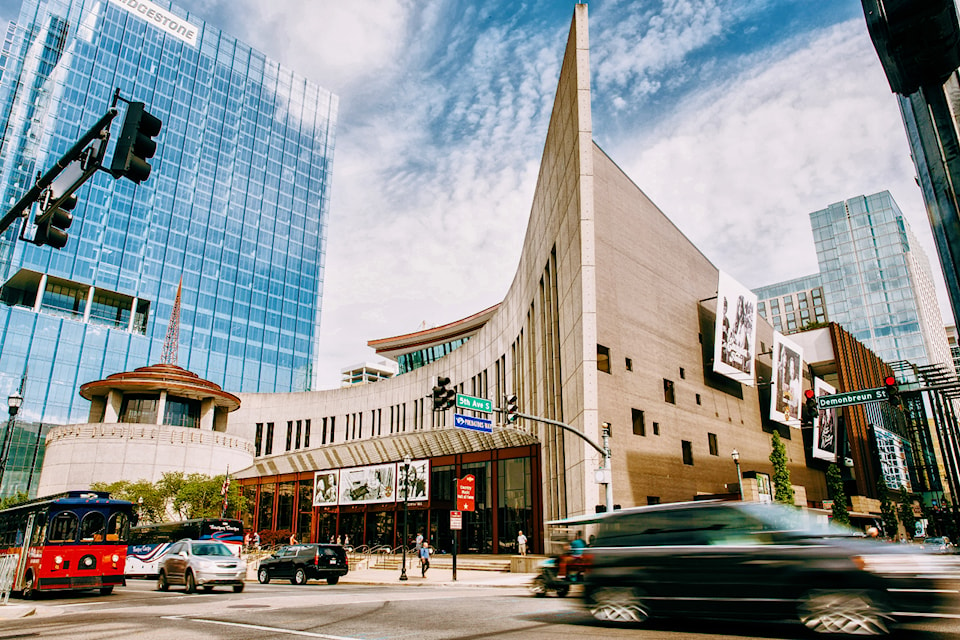There’s no such thing as a quiet night in Nashville, a city with no fewer than 180 venues for live music. When we visited in February, the low season, we made our way to the city’s famous South Broadway district expecting a subdued mid-week crowd.
We couldn’t have been more wrong. Robert’s Western World, a narrow honky-tonk bar with wood floors sticky with beer residue and a collection of cowboy boots lining the walls, was packed with people. Everyone’s eyes were on the band, its members performing with expressions of pure ecstasy on their faces. We absorbed the foot-tapping rhythm as we watched dancers twirl and swirl on the tightly packed dance floor, in an exuberant salute to the country music that has long been the heartbeat of Nashville.
Entry is free and performers play for tips at the honky-tonk bars so if you don’t like the music in one bar, you simply saunter into another. Around us, 20-somethings in town to celebrate bachelorette parties rubbed shoulders with seniors and every age group in between. You don’t have to be young or stylish to feel right at home on the Honky-Tonk Highway.
Nashville is a city exploding with growth. Cranes suspended over downtown are building skyscrapers for technology and medical companies that dwarf the modest, red-bricked buildings which once dominated the skyline. A city with a fascinating history, we took three days to experience Nashville’s top sights and explore its unique vibe.
Country music is everywhere in Nashville, and the best place to learn about its evolution is at the Country Music Hall of Fame and Museum. The two-floor exhibit reveals how this musical genre has changed over time and delivers insights on individual performers and their trajectory to success. Back in the 1930s, country music was associated with hillbillies, a negative perception that changed when the genre began to embrace cowboy culture, like life on the open range and the connotations of courage, romance and tough living. The museum is full of interesting artifacts, like Elvis Presley’s extravagant 1960 Cadillac, with portholes in the rear windows, a gold-plated television in the backseat and crushed diamonds embedded in its paint.

Browsing the museum, you get a sense of how various performers, now household names in the industry, started out. There are pictures of Martina McBride in her 1980s Dairy Queen uniform, well before she became famous. Jimmie Allen, who was honoured as country music’s new male artist of the year in 2021, was living out of his car for years when he moved to Nashville in 2007 to pursue his musical dream.
Many of the musicians whose careers are on display at the museum have played at the stately, red-brick Ryman Auditorium, Nashville’s oldest venue for live music. Built as a chapel 130 years ago, it still features its original church pews and a spiritual something in the air.
To pay the bills, the chapel became a music venue over time, and the Grand Ole Opry radio show broadcast live inside its hallowed walls until 1974, when it fell into disrepair. For close to 20 years the building sat derelict, with the threat of demolition hovering over it. Then, in the early 1990s, performers and locals worked to save and restore the historic structure. Over the years many famous figures have appeared at the Ryman, among them Charlie Chaplin, Nat King Cole, Harry Belafonte and Dolly Parton. Affectionately called the Mother Church of Country Music, the Ryman is a special place with a unique aura. Tour the building and you notice how many musicians have remarked on the Ryman’s distinct difference and its ability to inspire and elevate their performances.
After the Grand Ole Opry left the Ryman, the famed country music radio show built a new 4,000-seat venue, where, to this day, it broadcasts live several times a week, featuring the music of established and up-and-coming country music performers.
You can’t visit Nashville without taking in one of these two-hour-long performances, a 97-year tradition in the city. The night we attended, the Grand Ole Opry was packed with an audience that had come out to hear musicians Ricky Skaggs, The Whites, Jeannie Seely and Crystal Gayle among others. In a behind-the-scenes backstage tour we peeked into the rehearsal rooms, abuzz with performers waiting for their turn on the hallowed stage, an experience that even the regular performers consider an honour. Watching the show, I reflected there must be something about country music that keeps its musicians feeling youthful. While everyone performed with gusto and looked great, the age range of performers leaned considerably into the senior crowd, the oldest being 92-year-old Buck White, still in full control of his fiddle!

To get a sense of antebellum Nashville and the wealth produced as a result of the slave trade, we visited Belmont Mansion, an ornate home built in 1850 on what is now the grounds of Nashville’s Belmont University. The mansion was owned by Adelicia Hayes Franklin Acklen Cheatham, a socialite and art collector who, through marriage and shrewd investment, became one of Nashville’s wealthiest residents. Adelicia spent much of her wealth on lavish shopping expeditions in Europe, returning laden with the artwork and sculptures now on display in the mansion.
Her grand salon, considered the most elegant room in Tennessee, has Corinthian pillars, Roman busts and a level of extravagance that’s shocking even by today’s standards. Little is said of the 32 slaves who lived on site and maintained the 177-acre property, but the mansion tour offers an astounding glimpse at Nashville’s high society in the mid-to-late 1850s and the values of Adelicia and her contemporaries in the years leading up to the Civil War.
If You Go:
DO: The National Museum of African American Music is a fun, interactive experience that follows the many music genres that were created, influenced and inspired by African Americans. A visit to the museum is personalized and elevated by its many interactive exhibits, including the opportunity to perform and record with a gospel choir, and to don headphones and choose a selection of music to learn about the musician who played it and the musical influences in his/her life. nmaam.org
SEE: A Gray Line City Tour is a great way to get a general overview of Nashville, with peeks at its parks, universities, skyscrapers, museums, restaurants and music venues. Guides are friendly, conversational and full of suggestions on where to go and what to do in Music City. graylinetn.com
EAT: Luogo (luogorestaurant.com) is an upscale Italian restaurant where Chef Anthony Scotto focuses on Mediterranean-coastal cuisine. At Chauhan Ale and Masala House (chauhannashville.com), chef-owner Maneet Chauhan’s Indian fare has distinct western influences – like hot cauliflower pakoras and tandoori chicken poutine. At Butcher & Bee (butcherandbee.com), Israeli influence mixes with local sourcing for some crave-able shared dishes. Finally, Nashville is known for its fried chicken, and if you’re a spice addict, join the line at Hattie B’s Chicken. It has six spice options for its sauce, and the hottest three are “hot,” “damn hot” and “shut the cluck up!” (hattieb.com)
SLEEP: We split our time between two properties. The Kimpton Aertson Hotel Nashville (aertsonhotel.com) is a boutique property in Midtown featuring small but super comfortable rooms and a great selection of amenities, including free coffee downstairs in the morning, a curated selection of books that guests can borrow, and staff willing to go above and beyond to meet guests’ requests. Loews Vanderbilt Hotel (loewshotels.com/vanderbilt-hotel) is a bigger property with larger rooms and thoughtfully selected, Music-City-themed décor. Its expansive suites are often frequented by country music stars when they perform in town.
WestJet will start direct flights from Vancouver to Nashville in May 2023. Contact Nashville Visitor Services at visitmusiccity.com or call 800-657-6910.



